
After a meticulous seven-year restoration by the Opificio delle Pietre Dure, the altarpiece by Rosso Fiorentino returned to the Church of San Lorenzo in Sansepolcro on March 21, 2024.
Scala is excited to present an exclusive photographic campaign dedicated to this recently restored masterpiece. The photographs not only highlight the intricate details of the piece, but also showcase the exceptional restoration work, emphasizing the craftsmanship and attention to detail that defined this project.
In 1527, Giovanni Battista di Jacopo, known as Rosso Fiorentino, fled Rome, surrounded by Charles V’s Landsknechts. He found refuge and protection with Bishop Leonardo Tornabuoni in Borgo Sansepolcro.
The local painter Raffaellino dal Colle, recognizing Rosso’s fame, chose to pass him a commission for an altarpiece he had received from the Compagnia dei Battuti; that way Sansepolcro could showcase at least one work by the renowned Florentine artist. The altarpiece, commissioned for the Church of Santa Croce, was to depict the Deposition of Christ.
Even though the patrons were at first skeptical, they were convinced by Bishop Tornabuoni and most likely did not regret it. The result, in fact, was described by Giorgio Vasari in his Lives of the Most Excellent Painters, Sculptors, and Architects as follows:
“The Deposition is very rare and beautiful, because it captured a certain somber quality in the colors due to the eclipse that happened in the moment of Christ’s death, and it was executed with great diligence.”
The work was later gifted by the Compagnia, along with all their assets, to the Benedictine nuns of San Lorenzo. They built their church and housed the Deposition within it, where it can still be admired today in all its splendor after the restoration.
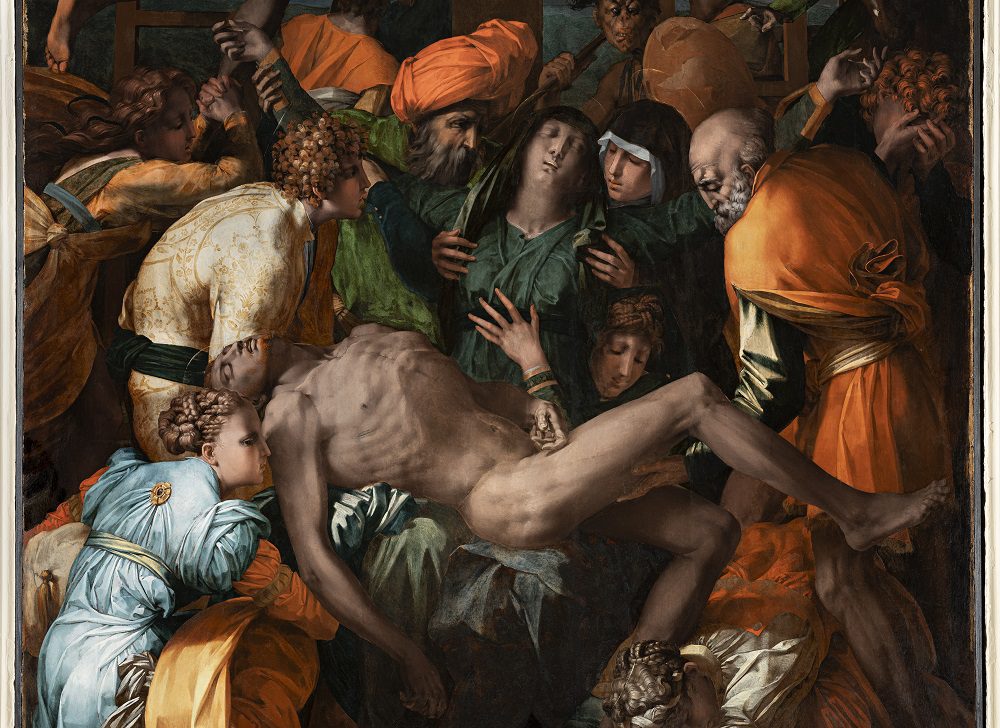
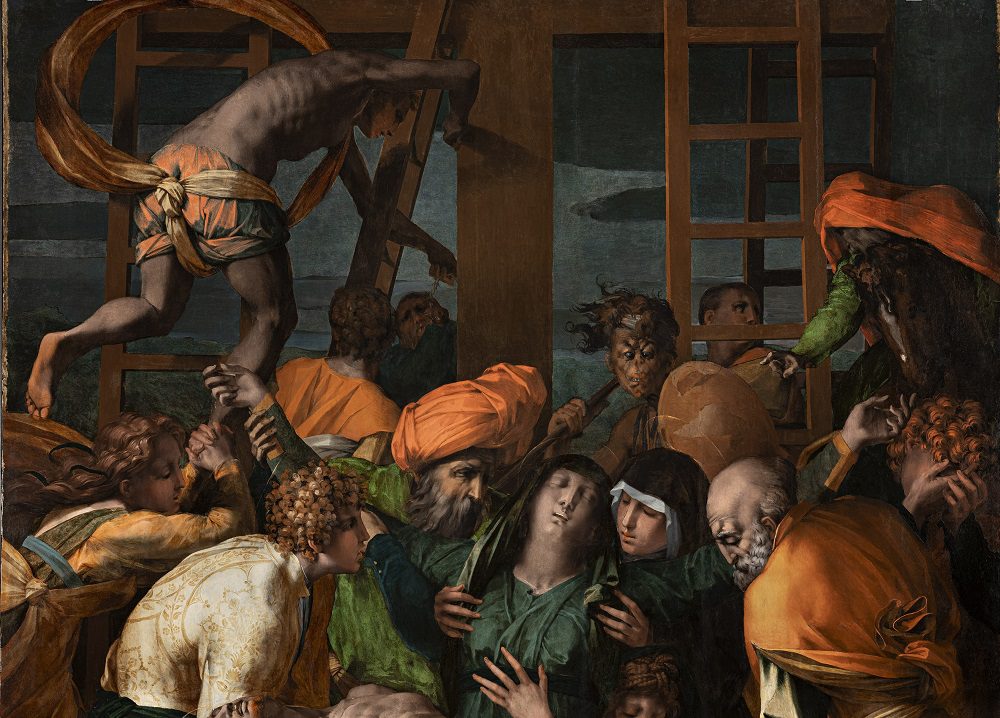
The Deposition shows the lifeless body of Christ being taken down from the cross during a solar eclipse, as described by the scriptures. This allowed Rosso to showcase his skill in depicting anatomy and nighttime lighting. The drama culminates in the figure of the Virgin, overwhelmed with sorrow.
Continuing with Vasari’s analysis, we can see and appreciate the qualities he praised in Rosso’s work: fierceness and grace, vibrant colors, rich drapery and hairstyles, and the multitude of figures and “inventions” that fill the canvas, evoke “wonder” for their “graceful style and strikingly extravagant elements.”
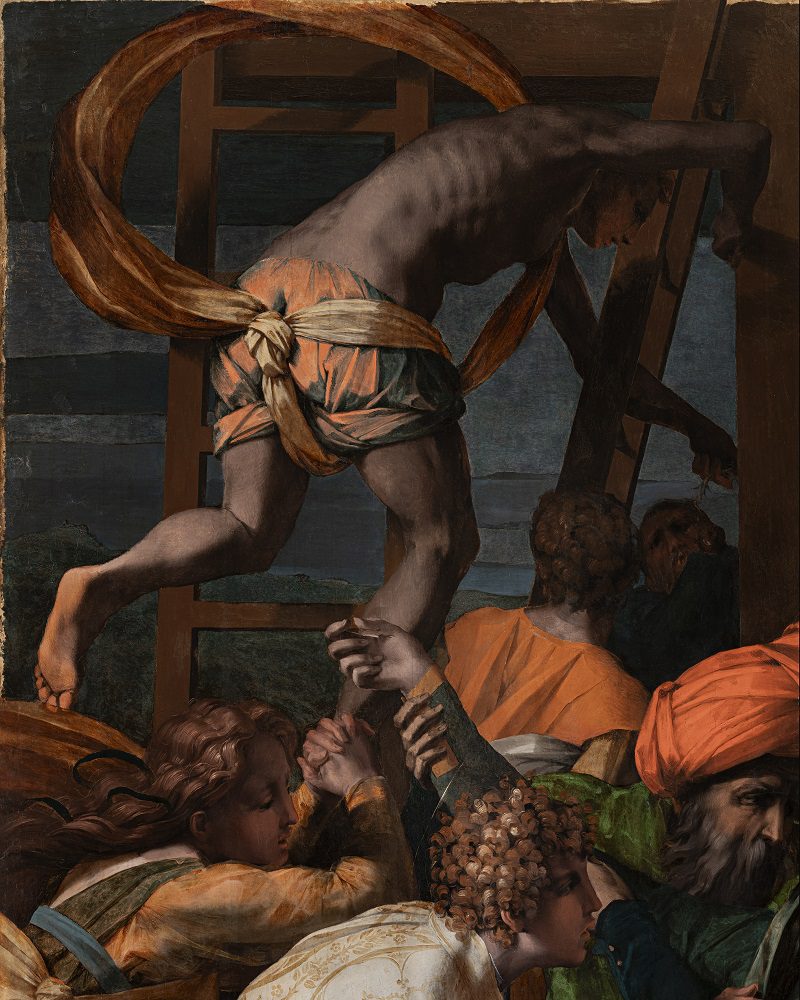

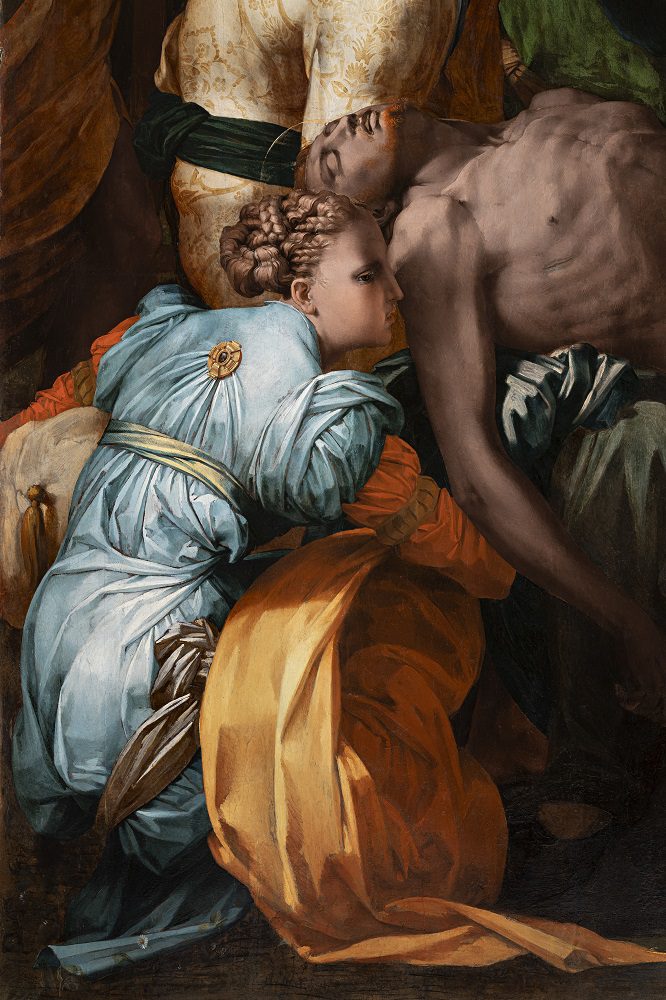
Among these latter mentioned extravagant elements, modern viewers— as probably those in Rosso’s time—are often captivated by the simian figure of the armiger in the background, gazing at us with his sparkling and crossed eyes.
This detail is also noted in Vasari’s writings, where we learn that Rosso Fiorentino owned a “bertuccione”, or monkey, in Florence and it said that the painter took it with him to Rome.
Since Rosso left Rome without any possessions, it is unlikely that the monkey accompanied him to Valtiberina. However, it is probable that he recalled the animal when depicting the brutality of the executioner. Furthermore, the figure of the monkey serves as an allegory for the nature of painting itself, reflecting the artist’s imitation of nature in its various forms.
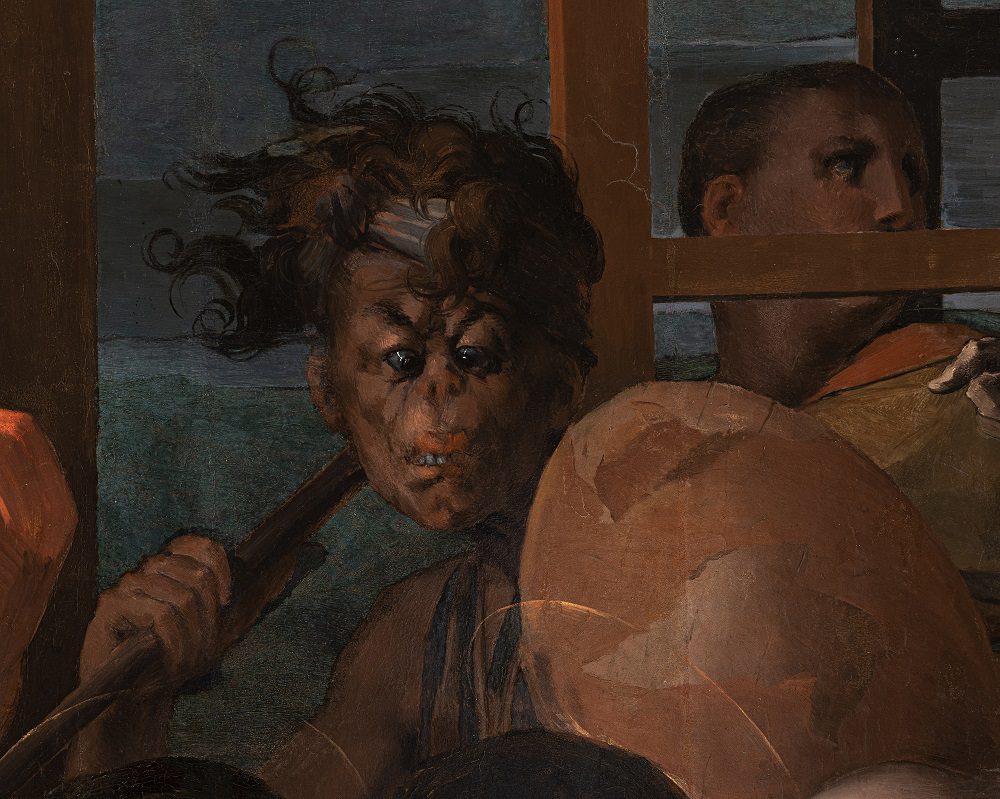
View this gallery to discover the artwork and details of the photo campaign taken by Scala
Rosso Fiorentino, whose real name was Giovanni Battista di Jacopo, was born in 1494 in Florence during an extraordinary artistic period. He stood out with his bold and innovative style, featuring elongated figures, intricate compositions, and vibrant colors that seem to dance on the canvas. His work is part of the Mannerist movement, which aimed to move beyond the classical harmony of the Renaissance, embracing greater expressiveness and emotional tension. His notable works include the Deposition from the Cross (1521) and The Madonna with Child and Saints (1518).
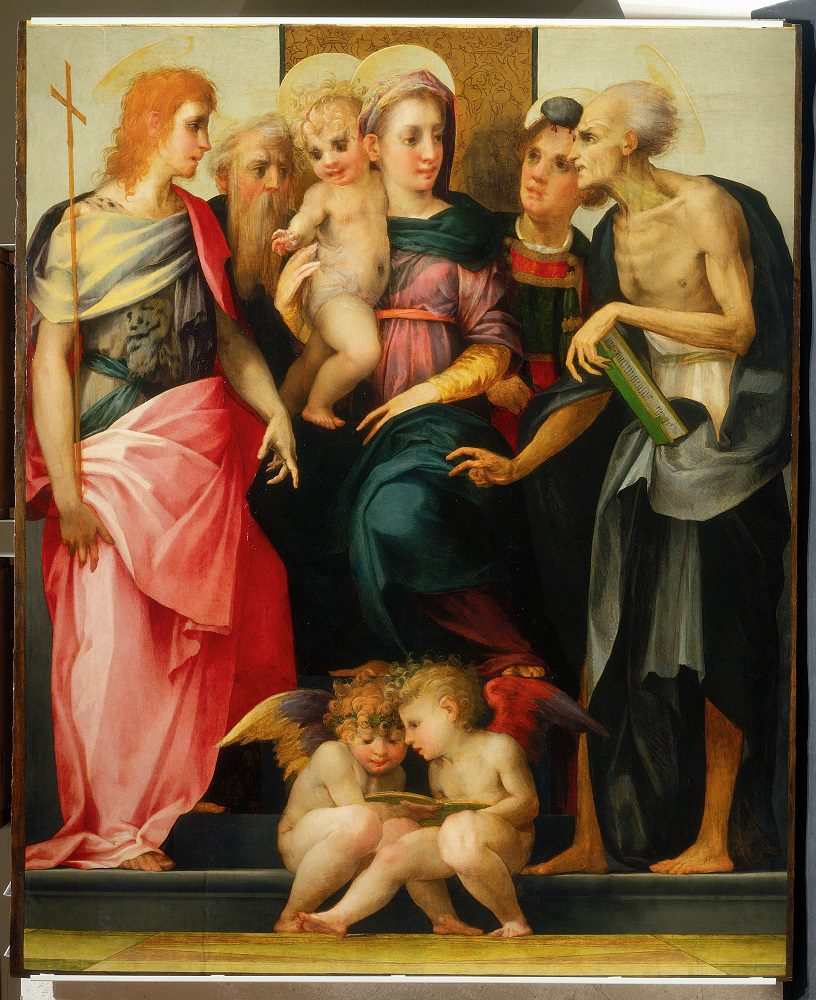
After some time in Rome, Rosso Fiorentino moved to France in 1530, where he began working for Francis I. He contributed to decorating the magnificent Palace of Fontainebleau, which helped solidify his reputation and marked a significant step in the expansion of Mannerism in France.
He passed away in Fontainebleau in 1540.
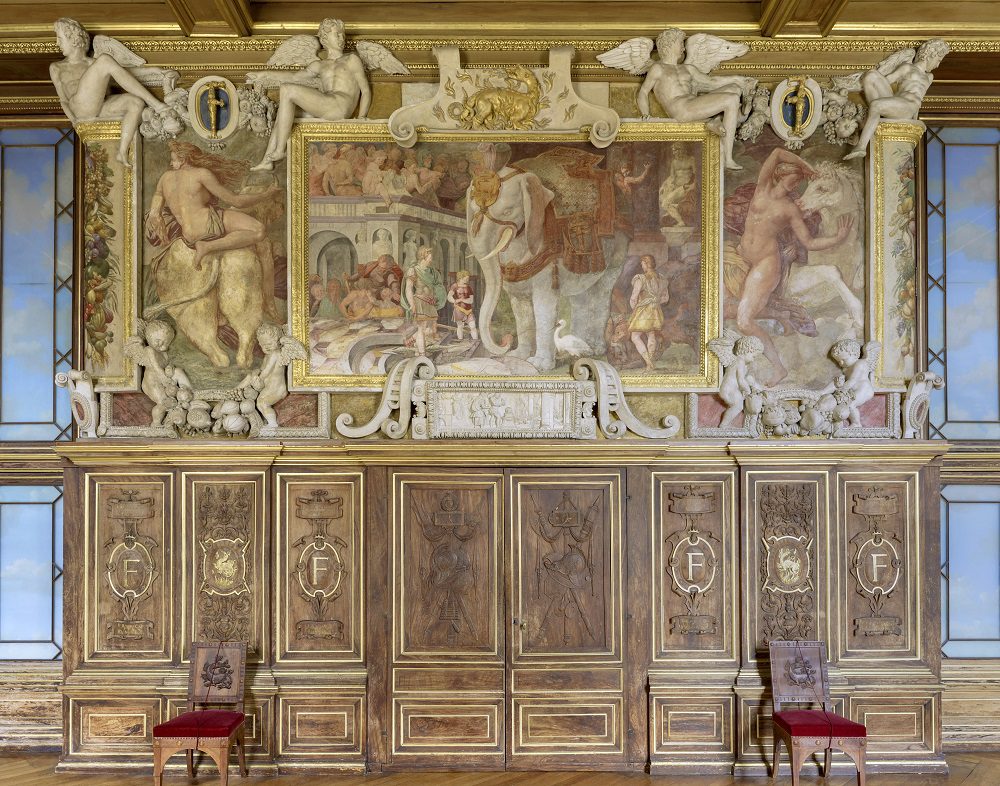
Within the Scala Archives you will find many photographs of works by Rosso Fiorentino.
If you can’t find what you need for your project, reach out to us. We have millions of images not yet available online and we can also contact our museum partners and photographers to help you get the right image and license for your specific project.